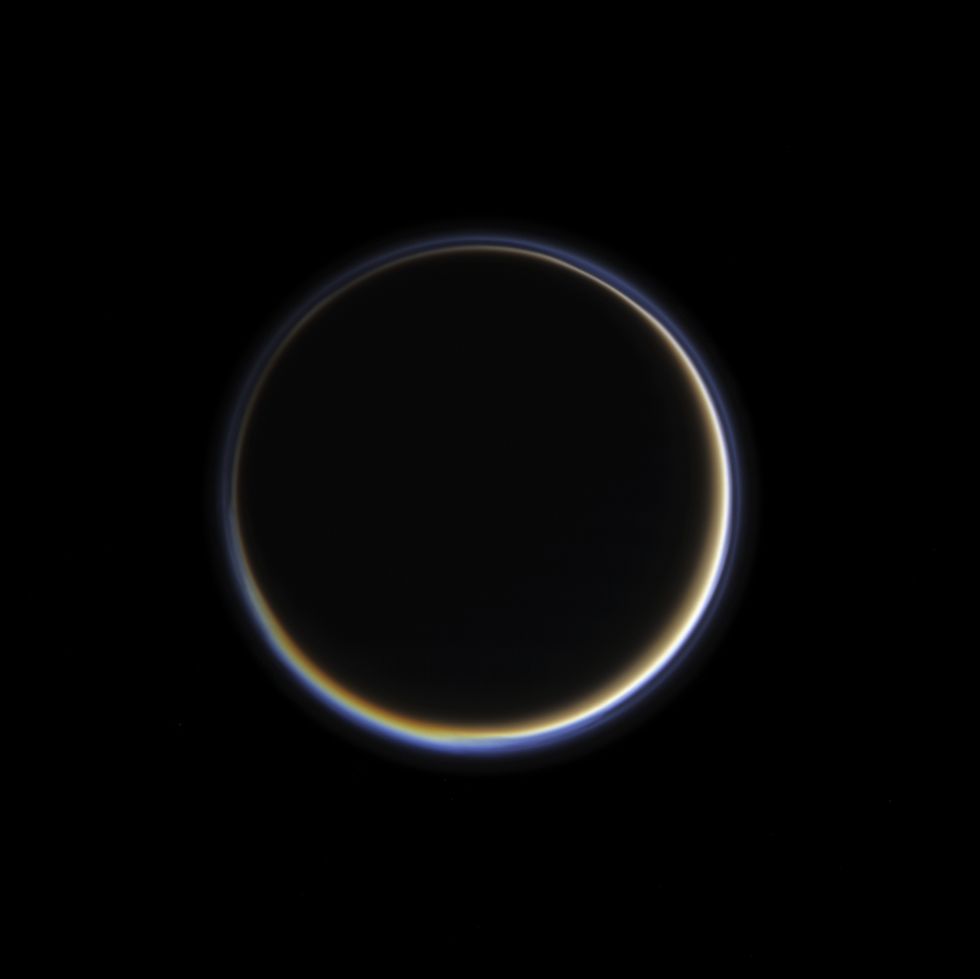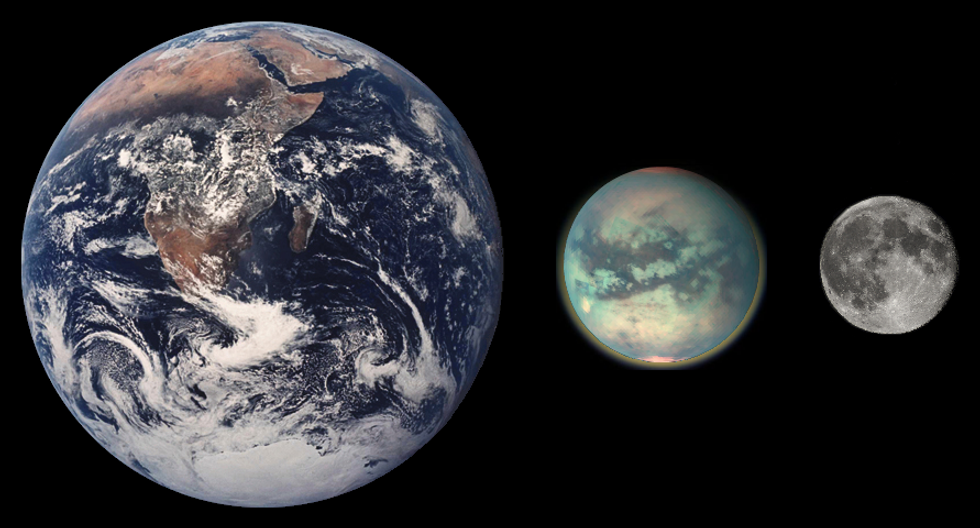Nasa astronauts Suni Williams and Butchwilmore splashdown back on Earth after nine months stranded in space
GB News
Scientists found that the subsurface ocean on Titan - around 300 miles deep - could support 'life-forms that consume organic material'
Don't Miss
Most Read
Trending on GB News
Scientists have discovered that Saturn's moon Titan could potentially harbour microscopic alien life in its subsurface ocean.
Researchers at the University of Arizona believe a "small population" of simple microbes might exist in the vast ocean concealed beneath Titan's "thick, hazy atmosphere".
The team found that the subsurface ocean on Titan - around 300 miles deep - could support "life-forms that consume organic material".
Titan has long been considered a good candidate for extraterrestrial life due to its Earth-like features.

A glowing ring of light caused by sunlight scattering in Titan's vast atmosphere defines the giant moon's nightside
Getty
The University of Arizona describes Titan as being "covered in rivers and lakes of liquid methane, icy boulders and dunes of soot-like 'sand'".
Despite its Earth-like surface features, scientists believe any potential life would be found in the ocean beneath its icy shell.
"In our study, we focus on what makes Titan unique when compared to other icy moons: its plentiful organic content," said Antonin Affholder, of the University of Arizona.
The moon's subsurface ocean lies approximately 300 miles below its surface.
SPACE LATEST:

Researchers at the University of Arizona believe a 'small population' of simple microbes might exist in the vast ocean concealed beneath Titan's 'thick, hazy atmosphere'
Flickr
Scientists believe that life on Titan might survive through fermentation, a process common on Earth that requires only organic molecules but no oxygen.
"Fermentation probably evolved early in the history of Earth's life," explained Affholder.
Computer simulations revealed that the total biomass on Titan would be minimal - "weighing a total of only a few kilograms at most -- equivalent to the mass of a small dog," according to Affholder.
This limited biomass would be sustained by organic material, particularly glycine, the simplest amino acid.
"We know that glycine was relatively abundant in any sort of primordial matter in the solar system," Affholder said.
Scientists calculated that microbes would need a steady stream of glycine from Titan's surface, delivered through melt pools created by meteorite impacts.
These pools would sink through the thick icy shell, bringing surface material to the ocean below.

Size comparison of Earth, Titan and our moon
Wikimedia Commons
The resulting biosphere would be incredibly sparse, with "less than one cell per liter of water over Titan's entire vast ocean."
Finding such life would be like searching for a needle in a haystack.
Nasa's Dragonfly mission is set to explore Titan further, with a launch planned no earlier than July 2028.
The mission will "deliver the most expansive suite of science instruments ever dispatched to another celestial body," according to Nasa.
Dragonfly aims to cover more than 50 miles of Titan's organics-rich surface.
Nasa explains the mission will be "landing, collecting and returning results that could change our understanding of life in the universe."








